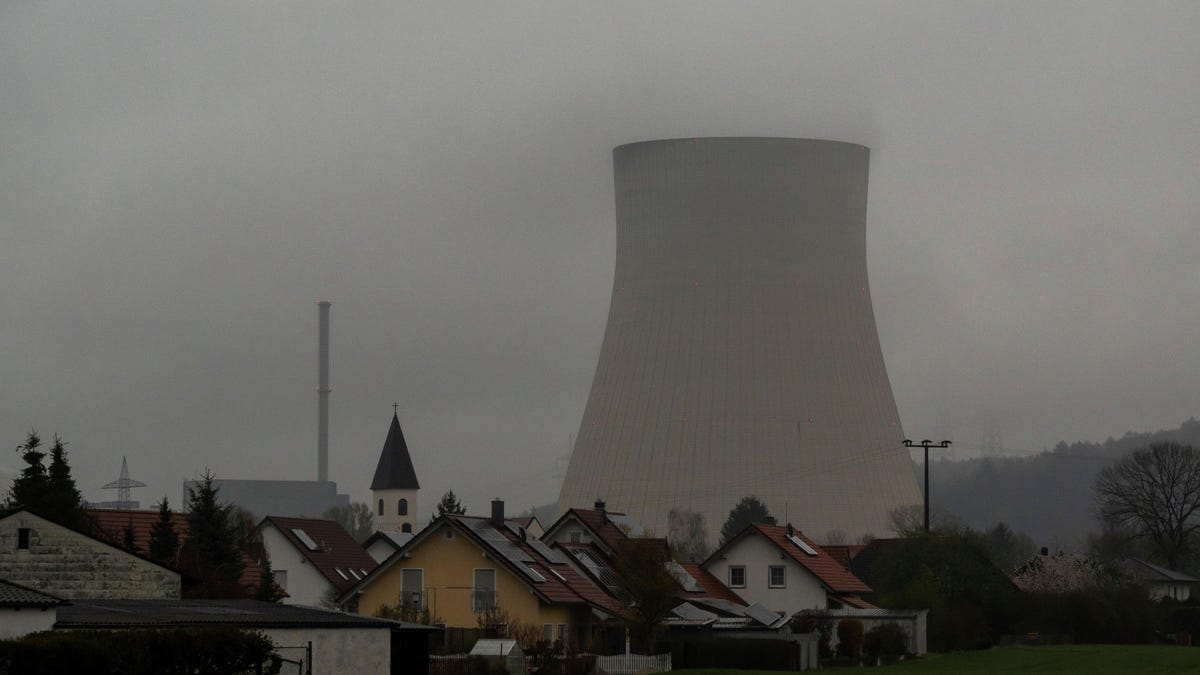
Some of the world’s largest most influential nations have formed an alliance to create new supply chains for nuclear energy—the same weekend that another country announced it had completely weaned itself off the energy source.
At the meeting of the G7 this weekend, leaders of nuclear trade associations from the U.S., UK, Canada, Japan, and France announced they will work together to create supply chains for nuclear fuels that do not rely on Russia.
Advertisement
When it comes to nuclear fuel, Russia’s supply chains are some of the most important in the world. While the country only provides 6% of the world’s mined uranium, raw uranium has to go through several steps to become nuclear fuel, including being converted to a more useful form and then enriched. Russia controls around 40% of the world’s conversion capacities, as well as 46% of the world’s enrichment capacities. The country is also a huge exporter of nuclear technology itself: of the 439 reactors online in the world in 2021, 38 are in Russia, 42 in other countries were made with Russian technology, and 15 under construction worldwide also use Russian technology.
“Russia’s unprovoked and unjustifiable war against Ukraine and the increasing impacts of climate change have fundamentally altered the global energy landscape and accelerated the need for collaboration between like-minded allies,” the U.S. Department of Energy said in a statement on the alliance. “…This strategic collaboration aims to increase the depth and resilience of our nuclear fuel supply-chains, while supporting the wider geostrategic objectives of further reducing reliance on Russia in the nuclear fuel supply chain for the long term and increasing the availability of commercial free-market alternatives in the supply of civil nuclear technologies to third countries.”
Advertisement
Advertisement
There is likely infrastructure in place to make this shift happen. According to a whitepaper authored by the Columbia Center for Global Energy Policy last year, many non-Russian powers, including the U.S., are not using the full capacity of their enrichment and conversion capabilities thanks to low prices. However, a market or policy signal could encourage other non-Russian producers to ramp up their outputs.
“If there is a policy in place to reduce or eliminate Russian involvement in Western nuclear fuel markets, this would almost certainly lead to a realignment in the supply chain,” the paper states.
Advertisement
But this new agreement doesn’t mean that everyone in Europe is committed to ramping up nuclear production. A day before the agreement was announced, Germany said that it had officially weaned off of nuclear energy, shuttering its last three power plants on Saturday.
“It is a great achievement for millions of people who have been protesting nuclear in Germany and worldwide for decades,” Greenpeace spokesperson Paul-Marie Manière told CNN.
Advertisement
While nuclear energy comes with a host of complications, including waste disposal and safety concerns, it is carbon-free and a valuable source of baseload electricity for more intermittent energy sources like solar and wind energy. The EU has debated for years on whether or not to define nuclear energy as a “green” energy source, thanks in part to a well of long-standing opposition in Europe to nuclear energy that has joined forces with traditional environmental and green groups like Greenpeace. In a vote last summer, the EU Parliament ruled to define nuclear and natural gas as green energy and eligible for subsidies, in a move that concerned some climate advocates who support the adoption of nuclear energy to help with climate concerns.
Germany’s move to close its nuclear plants while attempting to wean off fossil fuels, which has been in motion for decades, has been fraught. A German anti-nuclear movement that began in the 1970s helped form the foundation of the country’s Green Party, a major political power in the government. In 2009, Germany paused its nuclear transition but ramped it back up again after the Fukushima disaster in 2011. This represented a huge shift in the country’s energy mix: at the start of the last decade, there were 17 reactors in Germany, producing a quarter of its electricity.
Advertisement
Following the invasion of Ukraine last year, the government said it would delay the remaining three plants’ retirement thanks to a squeeze in natural gas supplies, but that delay only ended up lasting a few months. Research has found that coal-fired power, rather than renewables, has largely replaced German nuclear power.
Regardless of Germany’s direction, the rest of the world has made signals in recent months that it is reconsidering nuclear’s role in the energy transition, from keeping older plants open past their former end dates to announcing new plans for different types of nuclear reactors. It remains to be seen how geopolitical concerns, like the role of Russia and this new alliance, will help or hurt these developments—and whether or not Germany may regret shutting the lights on its reactors.
Services Marketplace – Listings, Bookings & Reviews